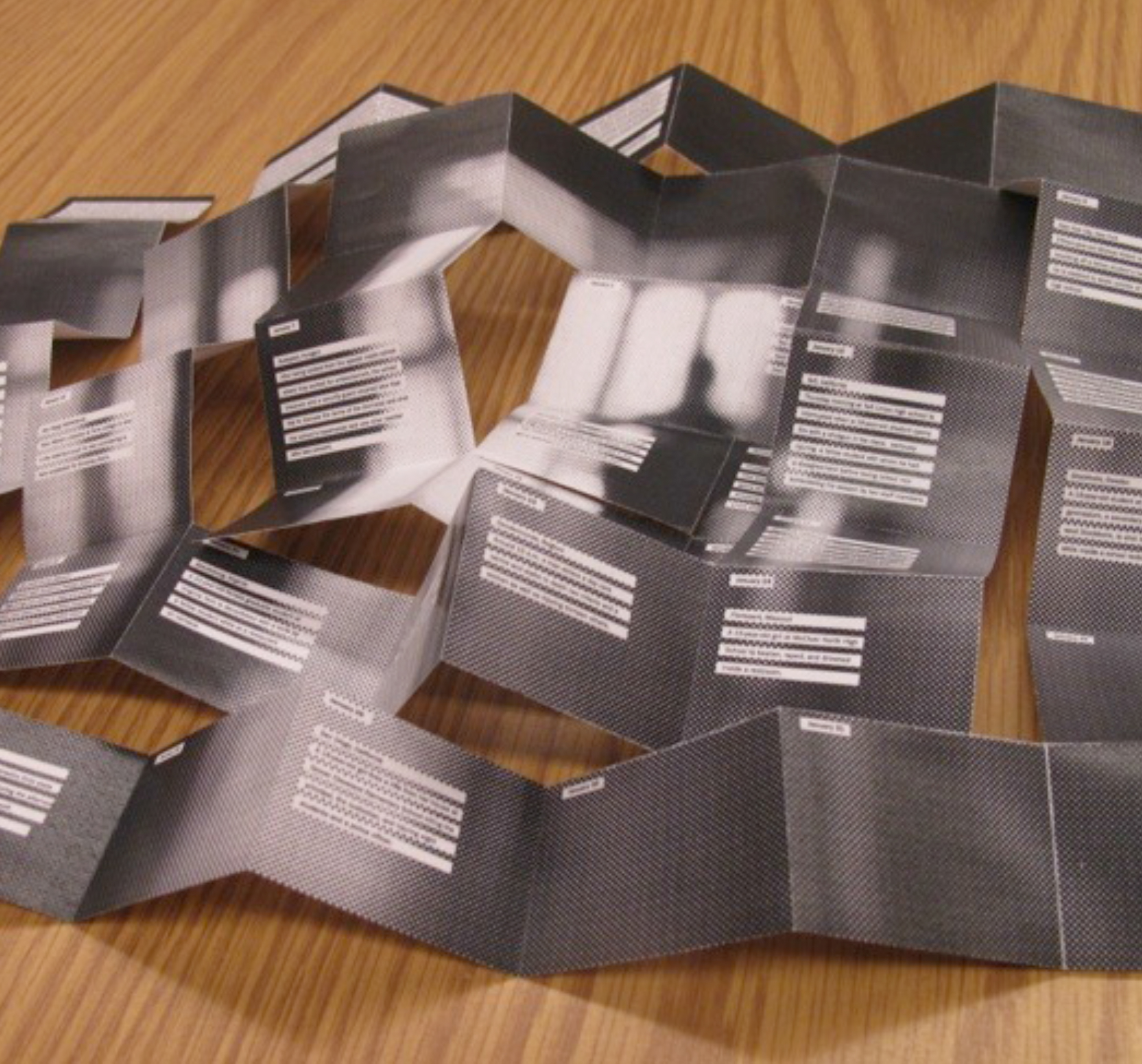
Collaboration.
It means working together to achieve a task.
Today thanks to the cloud, social media and other technologies, creative humans are empowered to collaborate on an unprecedented scale.
This week, I popped in to see the final presentations for Collaborative Synergy and I was thrilled to see that collaboration and synergy are much more than buzz words for the students studying Arts at UAlberta.
Collaborative Synergy was a project that brought together UAlberta design students from Professor Sue Colberg’s DES 594: The Practice of Graphic Design II with creative non-fiction writing students enrolled in Professor Janice Williamson’s WRITE 398: Intellectual Inquiry, Creative Nonfiction and Visual Communication to create artist books and other creative inventions.
The sheer variety of imaginative results was nothing short of amazing.
A Pictorial Compendium of the Natural and Cultured Pearl
A Pictorial Compendium of the Natural and Cultured Pearl, written by Deborah Ramkhelawan and designed by Robin Good
Deborah Ramkhelawan wanted to write about pearls because unlike gold and silver jewelry, pearls seem to be a cultural object that circulates more personally. “They seem to have more cultural and family meanings to them and that drew me to them.”
Deb’s writing process involved researching everything she could about pearls – from scientific formation to cultural uses and social representations in the media and art history to compile a compendium or cultural history.
“The challenge was to find a form to present that information, as no one wants to read a bunch of random facts about pearls.”
In stepped designer Robin Good who created a pearly jewelry box to house a series of stationary cards with imagery on the front to lead the viewer to the facts inside: “like a clamshell, you would open up each card to find the pearl of information inside.”
Robin’s favourite is The Birth of Venus card. “Its such a magnificent, historical art piece that ties the culture of the pearl to humanity.”
Deborah wrote this delightful, fun and quirky description of the project which you can read on Robin’s blog
Once upon a time, in the midst of an ocean of collaborative projects, two artists named Robin and Deb collided like sand under the skin of a mussel: Deb combed a shore of research and culled the grain of a project, pitching it up on a tidal wave of drafts; and Robin captured the drifting vision and spun its grain into a perfectly formed pearl, muscling mock-ups into the magnum opus of their creative compilation.
A calendar of violent school incidents, written by Garrett Johnston and designed by Chenyi (Mooie) Liao.
Writer Garrett Johnston created a timeline of violent school incidents, blocking out certain words, to provoke readers to fill in the blanks with their own imagination. Designer Chenyi (Mooie) Liao printed the calendar in a large format, cutting and folding it into a spiral configuration.
Designer Sarah Chou worked with a team of writers to create a Tolkien-inspired role playing board game called Secondary Worlds. She used a 3D printer to create the game pieces.
Writer Laura Fayad wanted to explore the Syrian Civil War and how the West represents it. The tunneling hole carving through the book design by Shayla Andersen represents the inability to fully conceptualize or synthesize the enormous volume of competing facts and information about the war outside of viewing it through very narrow perspectives.

- Interpretation: Thoughts on the Syrian War, wirtten by Laura Fayad and designed by Shayla Andersen
What sparked Collaborative Synergy:
“Janice approached me with the idea of a collaboration between our classes. We had both, separately, taken our groups to the Bruce Peel Special Collections Library to see examples of artist’s books and how the concepts in the writing/content had been rendered visually as well as look at materials and techniques. She had some nice results in her non-fiction writing class on subjects of a social/political nature and thought it might make interesting content for a design and visualization project for my design students who love artist’s books from the formal and conceptual points-of-view.”
– Art & Design Professor Sue Colberg
“For this collaborative project with Sue’s class, the creative writing students were invited to focus their work on human rights issues and to see where that took them. The collaborative process was exceptionally productive.”
-English and Film Studies Professor Janice Williamson.
What is Creative Nonfiction?
Creative Nonfiction is a genre linked to literary journalism or narrative nonfiction.
“There is some dispute about its geneology but you can trace the history through the New Journalism emerging in the 1960s that created a strong authorial voice while making use of imaginative literary techniques to enhance the power of the nonfiction writing. That’s the “creative” part of the name. But the genre is based in fact: creative nonfiction establishes a contract with the reader that the writing is linked to a world of facts.” – English & Film Studies Professor Janice Williamson.
What is WRITE 398?
WRITE 398 is an intermediate nonfiction course offered by the Department of English and Film Studies. Last year’s WRITE 398 students wrote, designed, and launched the first issue of Glass Buffalo, a magazine that publishes creative writing by University of Alberta students. Issue #2 of Glass Buffalo was just published.
For 2013, the theme for WRITE 398 was Creative Nonfiction, Intellectual Inquiry, and Visual Communication.
What materials and techniques did the designers explore?
Designers selected materials that would support the writers’ concepts from a visual point of view and, of course, the technical requirements of printing and building the pieces also played a part in the selection of materials. Many design techniques were explored, mainly utilizing digital printing, but there was some hand book binding,3D printing, and paper model making.
– Salena
Sue Colberg and Janice WIlliamson extend special thanks to Jeff Papineau and Linda Quirk for their help with the Collaborative Synergy project.
![]() Previous articleThe Student Design Association Presents Co-LabNext article
Previous articleThe Student Design Association Presents Co-LabNext article![]() Alma Mater
Alma Mater





